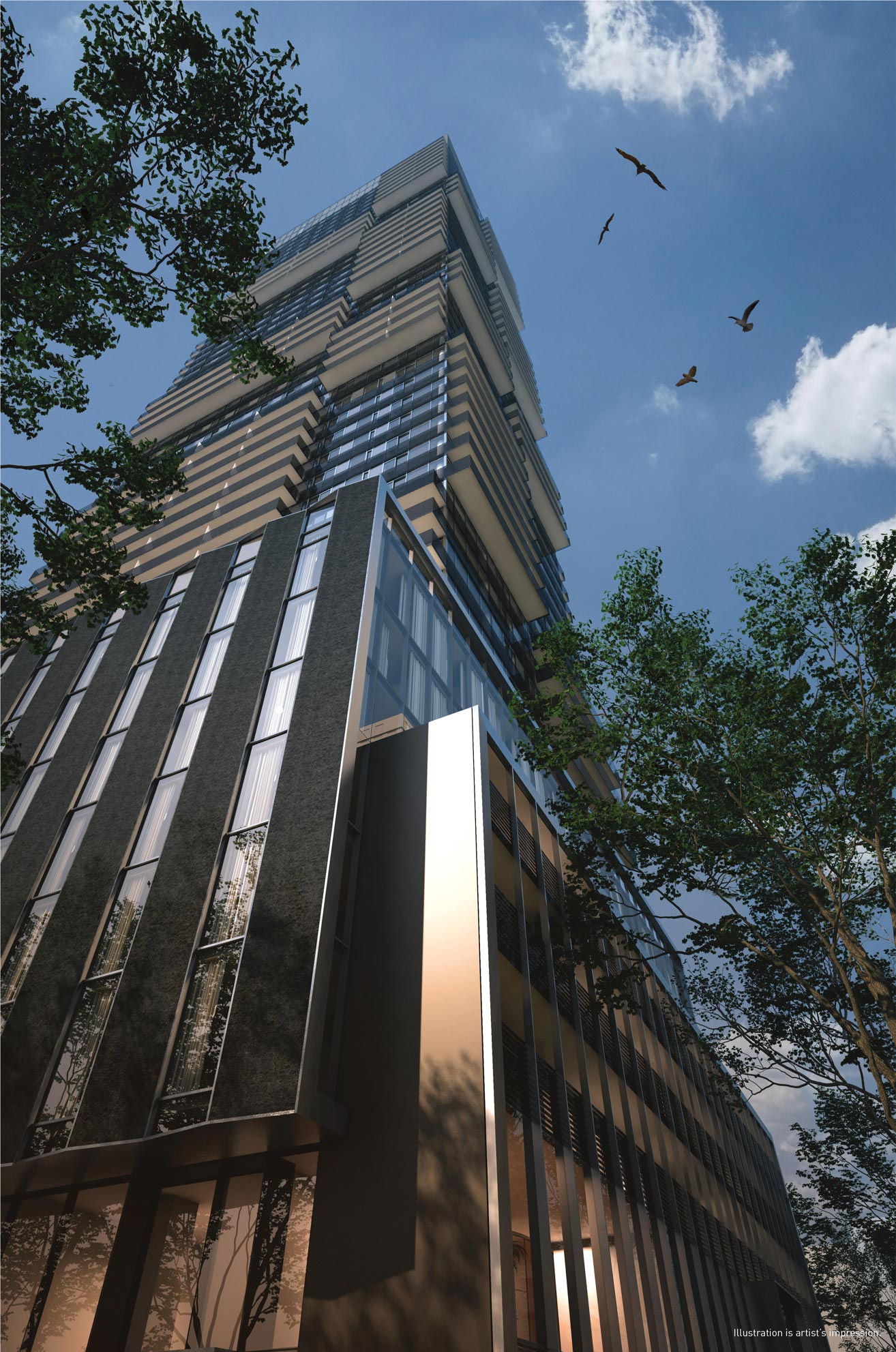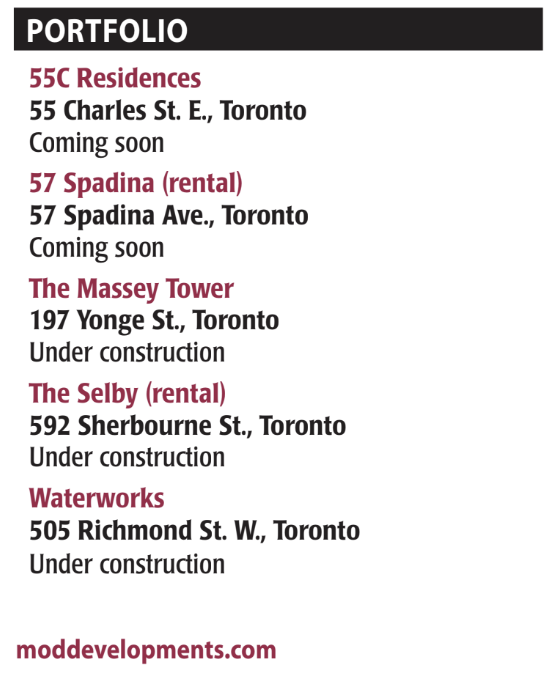In Conversation With…
(As appeared in Condo Life Magazine, December 2019)
Gary SwitzerChief Executive Officer, MOD Developments |
 |
Noorez LalaniPresident, MOD Developments |
 |
By Wayne Karl
They say teamwork makes the dreamwork, and at MOD Developments, the management team of Gary Switzer and Noorez Lalani provides as solid a one-two combination as anywhere in the development industry. Switzer, with a background as an architect, a city planner and developer, and Lalani, with a law degree and MBA, provide unique leadership and deliver some standout properties.
We spoke with Switzer and Lalani to explore their partnership, and what makes MOD what it is today.
Condo Life: Let’s start with an easy one… What’s 2019 shaping up like for MOD Developments, and what’s your outlook for 2020?
Noorez Lalani: This year has been great for us. First, we’ve seen the occupancy and registration of Massey Tower, the culmination of seven years of hard work. Secondly, we completed the rezoning of our development at 55-63 Charles St. E. and successfully launched it as 55C Residences in the spring. Finally, Waterworks is well under construction and is looking great.
Twenty-twenty will be another busy year for us. 55C will start construction in the spring, and occupancies for Waterworks will begin in the fall. We’re also looking at a few new sites, which we will be able to discuss in a few months.
CL: Your projects in downtown Toronto all seem to be centred around key landmarks and signature locations, focusing on statement architecture as opposed to master-planned communities. Why this strategy?
Gary Switzer: While our projects have all been on unique sites downtown, this has been a combination of opportunity and our ability to see po- tential in sites that had been overlooked or perceived as too difficult (Massey is a case in point). Our strategy in acquiring sites has always been to find transit-oriented sites in the best locations. This does not preclude us from one day doing a master-planned community.
CL: Any interest in expanding elsewhere, say in Vaughan or elsewhere in the 905 where condo demand is also growing?
Lalani: Quite simply, yes. It would depend on the location and site itself.
CL: What signature MOD features exist in all your projects… say, key qualities or characteristics that speak to your mission and say, ‘Yes, this is clearly a MOD development’?
Switzer: Architectural excellence, attention to detail (both on the exterior and interior), livability in the suites and an urbane presence in the neighbourhood.
CL: What have you learned from previous or current projects that you’ve made note of for future projects?
Switzer: In the end, the focus has to be on the suites and the future homeowners. We’re in the business of building homes for real people. All design decisions revolve around that.
CL: How much is purpose-built rental a part of your business – currently and in the near future?
Lalani: We have co-developed two purpose-built rentals to date and are currently looking at another opportunity. We believe that a healthy housing market has to include purpose-built rental.
CL: What are the challenges and opportunities in
Lalani: There are financial challenges in developing purpose-built rental in terms of equity requirements, which have made for-sale housing much more attractive to developers, to date. At the same time, the demand for new rental is so great, owing to immigration and high employment, and the development community has responded with more rental housing being built within the last few years than in the previous decade.
CL: What’s next for MOD Developments?
Lalani: More and more great buildings!
 |  |
AND ON A PERSONAL NOTE…
You seem to have a unique partnership as CEO and president, with complementary skillsets. How does this benefit MOD Developments?
Lalani: Between my background as a lawyer, a banker and obtaining my MBA with a specialization in real estate finance and development, and Gary’s background as an architect, planner and developer, MOD has the total “in-house” package: Experience in design, urban planning and development combined with sound business acumen and financial knowledge.
Gary, your background as an architect, city planner and developer is unique in the industry. How does this experience show up in your projects – say, in building inclusions, amenities, locations?
Switzer: My experience has helped MOD develop a reputation for producing buildings of the highest quality in terms of design, construction and customer service. We’ve learned how to push the envelope with respect to entitlements and produce buildings that set new standards in terms of not just height, but also suite design and concepts in amenities.
What insights did your time as a city planner provide you, say, in terms of how the ‘system’ works or ways to do things better, now that you’re on the development side?
Switzer: It’s much more difficult to develop buildings today as opposed to when I was a planner. When I was at Great Gulf and we won the Ontario Association of Architects Award of Excellence for “The Morgan” in 2005, this was at a time when there were no development charges, no Section 37 charges, park levies were half of what they are today, and approvals in the King and Spadina neighbourhood could be done through the committee of adjustment. Today, routine approvals can take two years. When I worked as a planner in the 1980s, it was much easier for planners to fast-track good projects. Unfortunately, today, city staff is laden with an overly-complicated approvals system that puts as much stress on them as it does on the developer. Focus has to be on simplifying the current process and emphasize good design.

